“A punk is someone who knows how to ask the world uncomfortable questions and does everything possible to make sure the world can’t cop out of answering those questions. A punk is a person who lives and breathes astonishment. Astonishing other people and astonishing yourself — that’s what art is for us, and without art, life can’t exist. It would be too boring.”
“Anyone can be a Pussy Riot”. Russian Feminist Punk Rock Protest Group
[In addition to my own observations, my comments are based on several independent sources listed in the links below. The words in this post reflect my personal thoughts. I alone am responsible for any inaccuracies. For more photographs and information, please click on the highlighted links in this post.]
Mexico is a complex country. One can forgive the Americans who misunderstand it but not those who fail to try. Mexico is our neighbor and our fates are conjoined. Understanding is a must.
I love Mexico. I especially love Oaxaca. I visit every year. The people are warm and friendly, and I feel safe there. But, there are problems.
“Short of genius, a rich man cannot imagine poverty.” Charles Peguy, Basic Verities
The government is repressive and corrupt. The cartels are brutal and obsessed with power. Poverty is ubiquitous, racism against indigenous peoples widespread, education levels low. On the bright side, all of this is changing.
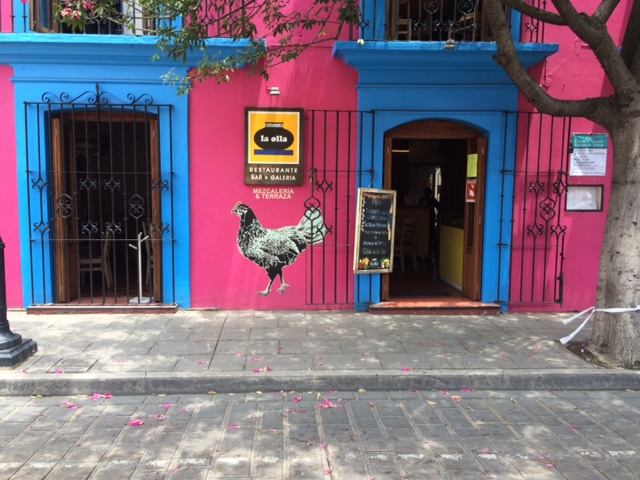
Chicken mural outside La Olla Restaurant by Lapiztola
Among the forces for change are the vibrant street art collectives, groups of artists who strive to make a difference with their murals in the tradition of the great Mexican muralists Rivera, Orozco and Siqueiros. One such group, Lapiztola, staged an event/opening at IAGO (Instituto de Artes Gráficas de Oaxaca) on Saturday night to celebrate their ten year anniversary.

Lapiztola (a pun on the Spanish words for pencil and pistol) was founded by two young graphic designers, Rosario Martínez Llaguno and Roberto Vega Jiménez, and Yankel Balderas, an architect and graphic artist. “The pun suggests the pencil is as mighty as the pistol,” says Kevin McCloskey. For an interview with the members of Lapiztola go HERE.
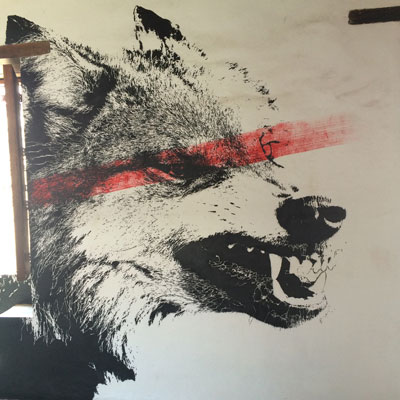
My introduction to Lapiztola was through my young friend, Oaxacan photographer and artist, Omar Alonso. We were sitting in La Olla Restuarant when I saw an arresting mural on the back wall of the upstairs bar. Omar said the title was La señora, La niña, El puerquito (the Lady, the Girl, and the Little Pig). He had documented Lapiztola producing the mural and it is available online at this LINK.
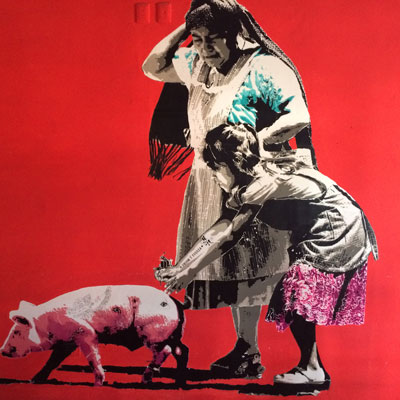
“Oaxaca is probably the closest you can get to a public art gallery. The amount of amazing art on the streets is striking and it most of it was created as a response to the local happenings. Following teachers’ strikes in Oaxaca in 2006 which were violently suppressed by the country, as well as political repression, grinding poverty, the perils of migration, threats to Indigenous people and environmental damage, the group of young artists gathered around the same idea and began adorning wall of the city. The results were public art pieces that were not only beautiful, but also usually had some sociopolitical commentary within. They also point to solutions and offer inspiration to take action.” LINK
“Let them eat cake.” Attributed (incorrectly) to Marie Antoinette after being told the poor could not afford bread. Marie Antoinette was later executed on the guillotine during the French Revolution.
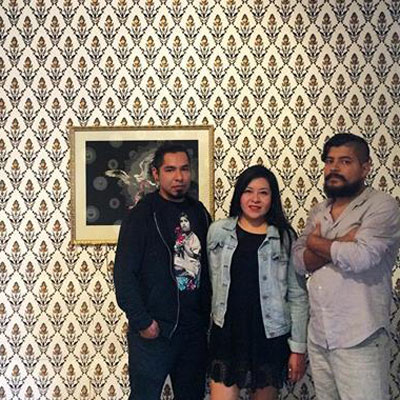
Lapiztola
Lapiztola uses their art to highlight everything from the cult of the drug lords and the use of genetically modified corn by the American corporation Monsanto to the plight of Central American migrants and the enduring grief of the mothers who have waited decades to bury the bodies of their disappeared children. These are problems too often ignored by the mainstream press. Art may be the only way to get the word out to a wide audience. Art is not just in the galleries. It includes graffiti on the streets, photography and paintings in the galleries, authors, poets and musicians. Authors from around the world have used Oaxaca in their work to highlight some of these issues. For example, one of the characters in John Vaillant’s recent novel laments:
“The problem for us is that NAFTA isn’t interested in some indio with a little milpa of one hectare growing native corn and taking a bag to market a couple times a year. NAFTA wants big farms and all the same corn— lots and lots, all the time, and this is who our government is subsidizing now, not the campesino.” César, in The Jaguar’s Children by John Vaillant
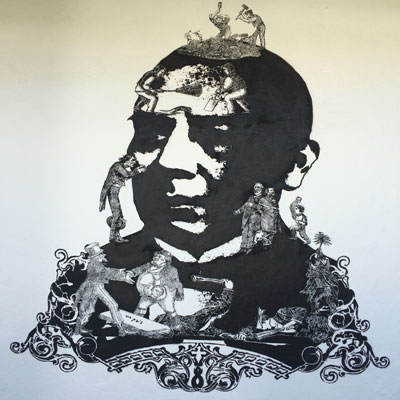
The street art of Lapiztola requires no detailed explanation. Its effect is visceral. The local people understand exactly what is being said and so does the government. That’s why the government has been systematically destroying this kind of art as it spontaneously arises. “It’s a shout painted on a wall,” says Martinez.
“No doubt they’ll sing in tune after the revolution.” Kamorovsky, in Doctor Zhivago, breaking the uneasy silence in an expensive restaurant caused by the singing of a Bolshevik demonstration on the street outside.
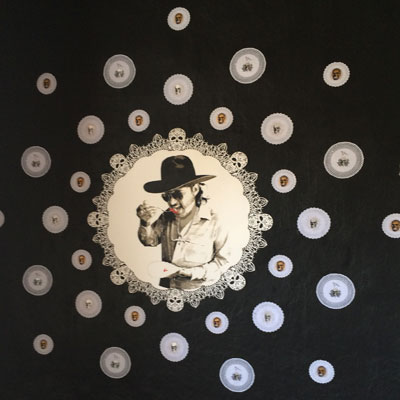
The Cartels are eating Mexico
The government prefers the tourists to see Oaxaca as a quaint Mexican city where the locals dress in their indigenous clothes and peddle their textiles, arts and crafts around the zocalo. No doubt this is pleasing to the tourists and good for business, but visitors need to be aware of the incongruities under the surface. The tourists, like the artists, have the power to bring change.
Having eyes, see ye not? and having ears, hear ye not? and do ye not remember? Mark 8:18
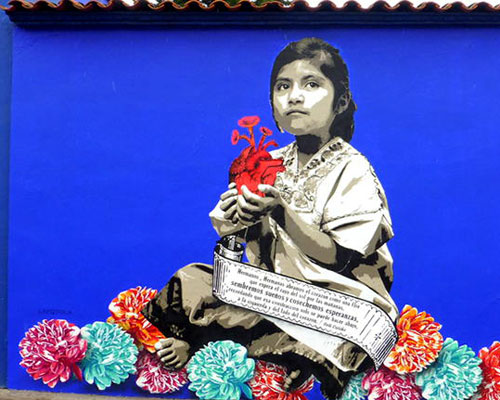
Mural to honor Beti Cariño
Last year in October the government removed a popular mural at the Museo Belber Jimenez and the public outrage went viral. The mural was described as “stunning and deeply moving.” Too stunning, apparently, for the government’s taste, yet the government does nothing about the ugly graffiti that covers the walls of the historical district.
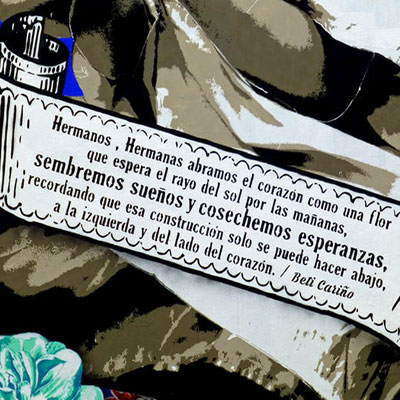
Beti Cariño Banner
The offending mural carried a message from Beti Cariño, a human rights activist who was killed in 2010: “Brothers, sisters open our hearts like a flower waiting for the ray of sunshine in the morning, we sow and reap hopes, dreams remembering that new life proceeds from the left side of the heart.” A new mural at the recent show is of a young girl holding a heart with the same banner.
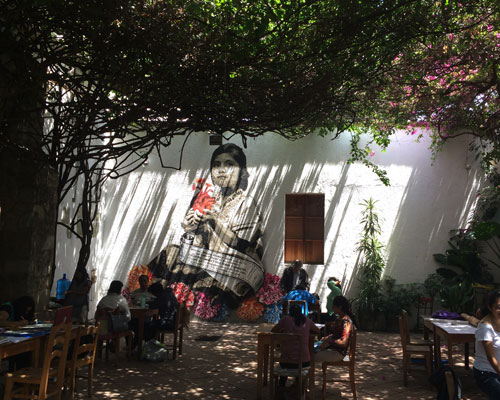
Whether or not those walking past the murals can read, they know what the murals say. This is art that speaks equally to the people and to the powerful. It says that life is hard but it can be better if we strive to make it better, a thought that threatens some. A frequent motif of Lapiztola is to show a child or an adult in difficult conditions juxtaposed with a flock of birds that could represent freedom from life’s harsher realities.
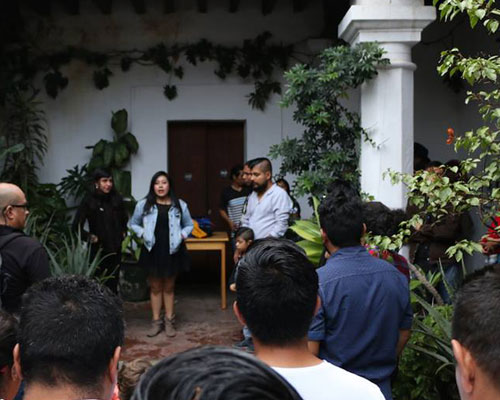
“I hate to say it, but we have to leave it the way it is. People have to go out, they have to work really hard, and they have to get into that upper stratum. But we cannot do this if we are going to compete with the rest of the world, we just can’t do it.” Donald Trump when asked about raising the minimum wage during the Republican Primary Debates.
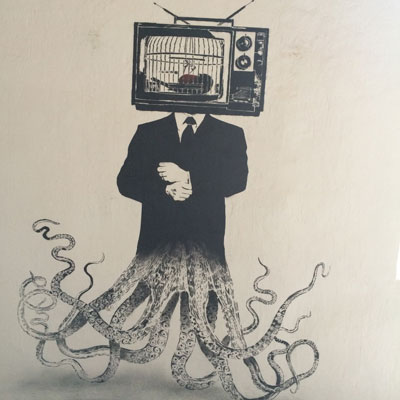
Lapiztola’s art has traveled the world with exhibitions in London, Cuba, Spain, Chile, the United States and throughout Mexico. Bricia Lopez brought in Colectivo Lapiztola to paint the bright orange façade of La Guelaguetza at her family’s restaurant in Koreatown, Los Angeles.

For this mural, the artists chose the image of a young boy and girl in traditional Oaxacan clothes. The girl is holding an ear of corn, while the boy holds a chicken. The artists say their hope was to capture the ideal expressed in the name Guelaguetza, a big annual festival in Oaxaca. The word translates as “to receive and to give.”
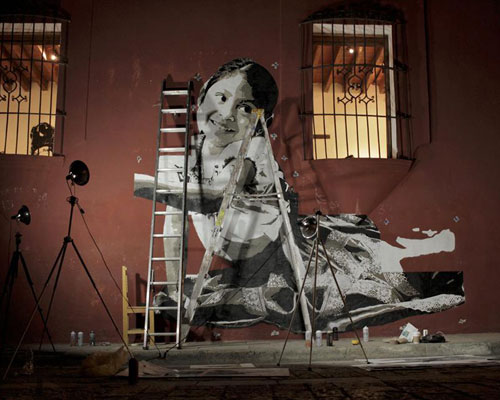
Photo by Omar Alonso
Lapiztola has developed techniques to make sure their art is not shut down before it has a chance to speak. The use of stencil and screen painting allows for faster construction of the murals. The group often works through the night when no one is looking. This puts the government on the defensive. Government is reactive, not proactive.
The images of Lapiztola burn their way into the brain. Once seen, they cannot be forgotten even if they are later removed. The statements spread by word of mouth. It becomes “cool” to repeat them. They form the basis for further discussion.
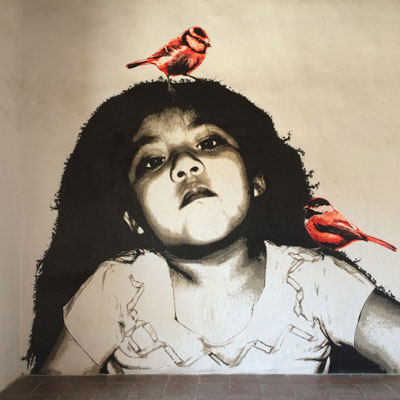

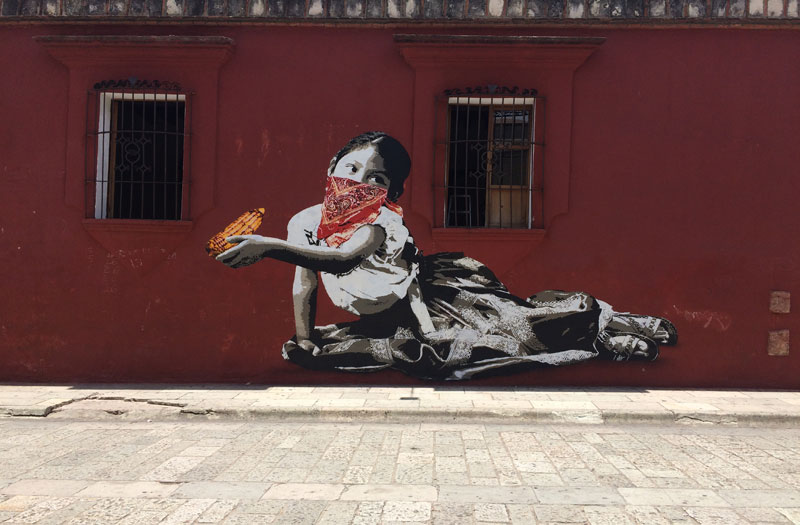
A lot different than what I saw there in the eighties. Great murals. We bought a number of art pieces in Mexico City. I don’t recall much street art in Oaxaca.
We’re currently in Oaxaca and I really love to spot street art here and there, it’s like finding treasures through our everyday walks!
Thanks for commenting. I like your blog.